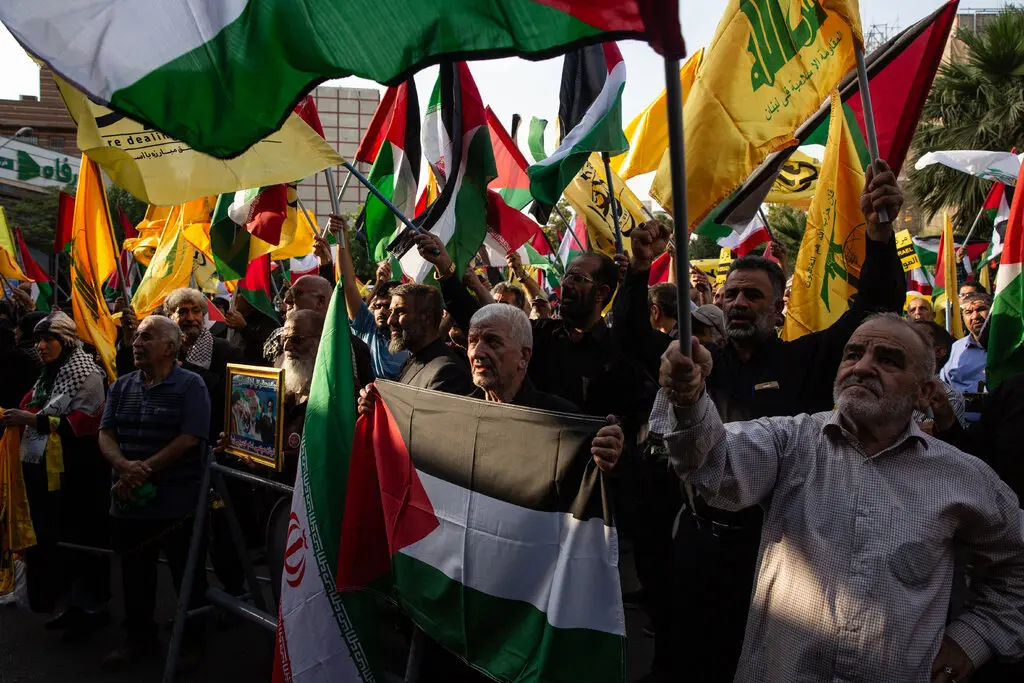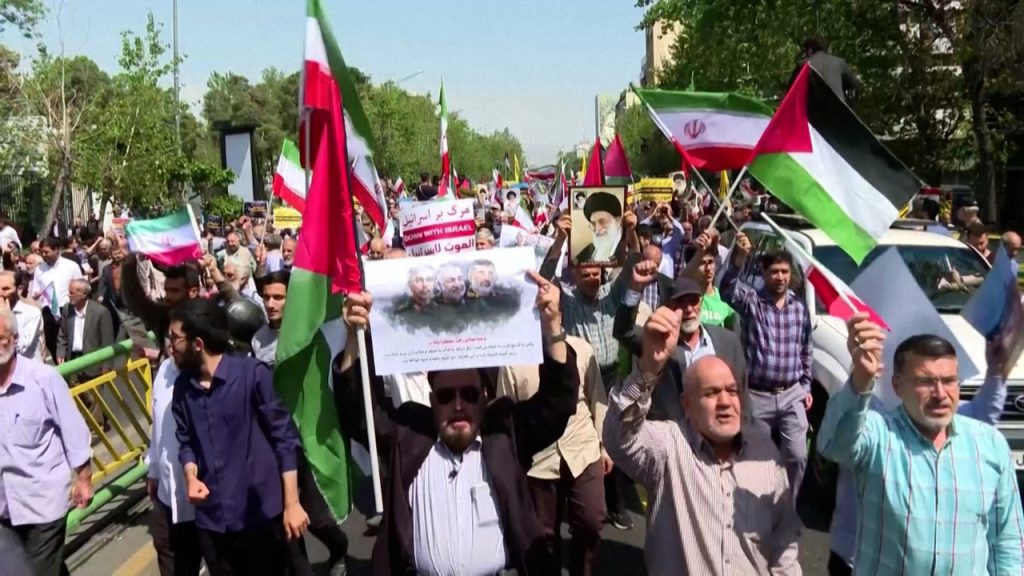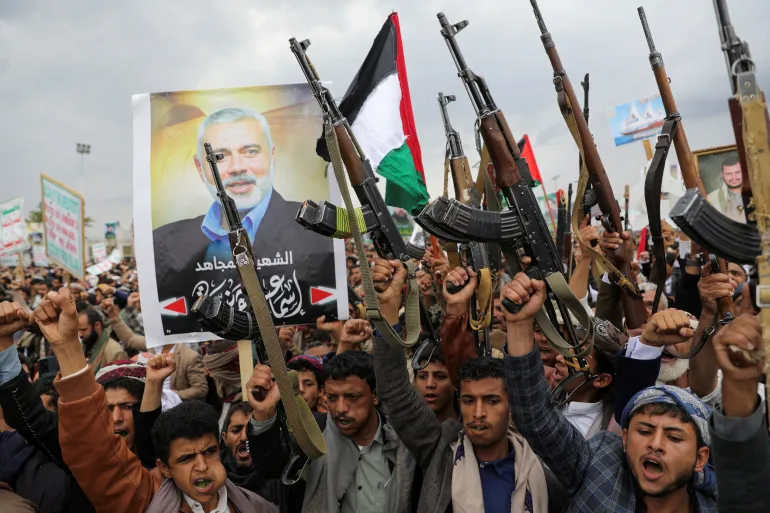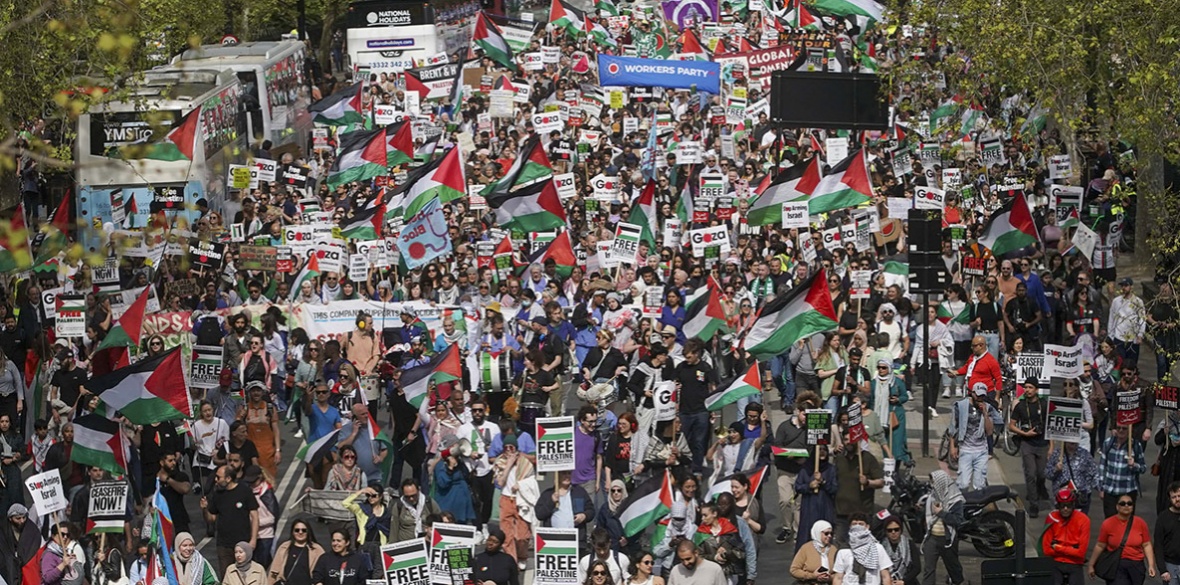Have You Ever Wondered about the Timeline of Recent Tensions In The Middle East? The Middle East has been a region of ongoing conflict for decades, but tensions have reached a boiling point in recent weeks. The assassination of senior leaders of militant groups Hamas and Hezbollah sparked a series of events that have escalated the longstanding conflict between Israel and Iran.
These events have not only threatened the stability of the region but also raised global concerns. In this blog post, we will take a closer look at the timeline of recent tensions in the Middle East, from the initial assassinations to the cross-border strikes and their impact on the ongoing war in Gaza. It is a complex and constantly evolving situation, and understanding the timeline of events can help shed light on the current state of affairs in the Middle East.
Table of Contents
Prelude to the Escalation

The stage was set for heightened conflict, quietly yet ominously. Weeks before the dramatic flare-up, signals of unrest flickered. Behind the scenes, geopolitical chess moves positioned vital players. Assassinations of influential leaders loomed large, casting long shadows. Iran, backing militant factions, openly voiced threats of retaliation.
This backdrop of tension simmered, unnoticed by many. The world watched, holding its breath, as the Middle East teetered. Allies urged caution, fearing a broader conflagration. Yet, the dominoes of discord had begun to tumble. Each event interconnected, weaving a tapestry of impending turmoil. Thus, the prelude to escalation unfolded, setting the stage for what was to come.
Jan. 2: Hamas Leader Killed in Beirut
On January 2, the tranquility of Beirut was shattered. Saleh al-Arouri, a high-ranking Hamas figure, met a violent end. Alongside him, two commanders faced a similar fate. Their demise sparked controversy, stirring the pot of regional unrest. Israel, the accused orchestrator, kept a stoic silence. Meanwhile, Lebanese and U.S. sources pointed fingers at Israel.
This incident wasn’t just a blip on the radar. It signified a significant escalation, hinting at the depths of Israel’s reach. Al-Arouri’s killing outside the usual hotspots underscored the conflict’s expanding geography. Indeed, this event foreshadowed the intensifying spiral of retaliation that was to follow, marking a somber start to the year.
Jan. 6: Hezbollah’s Retaliation Against Israel
Hezbollah responded with force. Rockets soared toward northern Israel. A military base was their target. Though Hezbollah claimed casualties, Israel reported none. Their counterstrikes targeted Lebanon, keeping tensions high. This act by Hezbollah was symbolic yet poignant. It was their message, loud and clear.
About 40 rockets targeted Mount Meron. This area, home to a radar station, felt the impact. Yet, this retaliation was a calculated move. It was more about sending a signal than causing chaos. The escalation was clear but measured. The conflict’s dynamics shifted subtly yet significantly. This event marked a significant moment in the ongoing tensions.
April 1: Damascus Hit by Airstrikes

On April 1, the night sky over Damascus lit up. Israeli forces had launched airstrikes. Their target was part of the Iranian Embassy complex. Three Iranian senior commanders met their end. Along with them, four officers perished. These officers were involved in covert operations. It was a significant blow in the Israel-Iran shadow war.
The region’s already strained tensions spiked further. As confirmed by Israeli officials, the strike was impactful. Yet, they denied the building’s diplomatic status. This event added another layer of complexity. It showcased the increasing stakes in the ongoing conflict. Indeed, the struggle for power in the Middle East continued to escalate.
April 14: Wave of Missiles and Drones Against Israel
April 14 witnessed an unprecedented attack. Iran launched over 300 drones and missiles. Their targets were military installations across Israel. This assault marked Iran’s first direct attack. Minor damage was reported, and a young girl was injured. Israel’s defenses intercepted the majority of these threats. U.S. and Jordanian forces also took down several.
This attack was not about inflicting widespread harm. It seemed carefully calculated, aiming to avoid significant casualties. The message was clear; Iran was showing its capabilities. Yet, it also showed restraint, possibly to evade a full-scale war. This day, we have added a new dimension to the complex conflict, underlining the precarious balance of power.
July 13: Airstrike Hits Humanitarian Zone in Gaza
On July 13, tragedy struck in Gaza. Israel aimed for Muhammad Deif, a top Hamas commander. Instead, the strike devastated Mawasi, a humanitarian zone. Here, thousands of displaced Palestinians sought refuge. Sadly, 90 lives were lost, and 300 others sustained injuries. This area, intended for safety, became a scene of destruction.
The aftermath left the international community in shock. It questioned the safety of designated humanitarian zones. This strike not only sought a high-value target but also profoundly affected the civilian population. The loss of life underscored the conflict’s harsh realities, fueling further tensions in an already volatile region.
July 27: Israeli Golan Heights Under Rocket Fire

On July 27, a grim event unfolded. A rocket from Lebanon found its mark. It struck a soccer field, a place of joy. Suddenly, it became a scene of sorrow. Majdal Shams, a Druse town, bore the brunt. Twelve young lives were tragically cut short. This act was the deadliest in recent months. Tensions flared across Israel’s northern border.
Israel pointed fingers at Hezbollah for this horror. However, Hezbollah quickly denied any involvement. This incident deepened the rift in an already strained relationship. Such events underscore the conflict’s unpredictable and devastating nature. Amidst accusations, the quest for accountability continues.
July 30: Beirut Hit by Another Attack
The calm of Beirut was again disrupted. Israel targeted Fuad Shukr, a key Hezbollah figure. The strike was a direct response. It aimed at the heart of Hezbollah’s leadership. Concerns in the region immediately heightened. Israel’s reach within Lebanese borders became a hot topic. This attack was not merely about retribution.
It was a solid message to Hezbollah and its allies. Speculations about further escalation began to swirl. The international community watched closely. Each move in this chess game was critical. The strike added another layer to the complex regional dynamics. Beirut found itself, once more, at the center of conflict.
July 31: Hamas Leader Dies in Tehran Strike
In the early hours, Tehran witnessed a chilling event. Ismail Haniyeh, a Hamas leader, fell victim to a deadly plot. An explosive device, stealthily smuggled, sealed his fate. This bold act shook the core of Iran-Hamas ties. Quickly, accusations pointed toward Israel’s involvement.
Iran and Hamas voiced their vows for retaliation. The assassination highlighted the far-reaching shadows of this conflict. It underscored the fragile peace, now hanging by a thread. As tensions soared, the Middle East braced for the fallout. This incident opened a new chapter in the ongoing strife, signaling a possibly turbulent future.
August: Ezbollah and Israel Engage in Heavy Cross-Border Strikes

As August dawned, violence surged anew. Israeli airstrikes pounded southern Lebanon. A factory, tragically hit, saw civilians perish. Lebanon reeled under the impact. At least ten innocents lost their lives. This was one of Lebanon’s darkest moments since October. Cross-border strikes intensified dramatically. Both sides unleashed fury, signaling no end in sight.
The cycle of violence seemed unbreakable. Each strike further entangled the adversaries. The specter of a broader conflict loomed large. Communities on both sides lived in fear. The hope for peace grew dimmer. Yet, amid the chaos, a call for restraint echoed. The world watched, hoping for de-escalation. The region’s fate hung in the balance, precariously.
FAQs About Timeline of Recent Tensions in the Middle East
What sparked the recent escalation in tensions in the Middle East?
The assassinations of senior leaders of Hamas and Hezbollah primarily triggered the escalation. These events heightened the longstanding conflict between Israel and Iran, which supports these groups.
How did Hezbollah and Hamas respond to the assassinations of their leaders?
Hezbollah launched rockets into northern Israel as a symbolic act of retaliation. At the same time, Hamas’s response included more confrontations and increased rocket fire toward Israeli territory, signaling their defiance and capacity for retaliation.
What was the significance of the strike on the Iranian Embassy complex in Damascus?
The strike killed three senior Iranian commanders, marking a significant escalation in the shadow war between Israel and Iran. It underscored the increasing stakes and the widening geography of the conflict.
Has there been any progress towards peace or de-escalation?
Despite the ongoing violence and retaliatory strikes, efforts for peace and calls for restraint continue from the international community. However, the assassinations and subsequent military actions have severely impacted the prospects for a cease-fire, keeping the situation tense.
Conclusion About Timeline of Recent Tensions in the Middle East
In sum, the Middle East’s timeline reveals deep complexities. Assassinations set off this latest spiral. Rockets and airstrikes followed, each adding to the tensions. The cycle seems unending, with peace elusive. Yet, amid the strife, calls for restraint persist. Each incident, while tragic, underscores the urgent need for dialogue.
The region stands at a crossroads. Paths to peace or further conflict lie ahead. It is a moment for decisive leadership. The international community’s role is crucial now. Hope for de-escalation remains despite the challenges. In the end, only through understanding can lasting solutions be found.

Dilawar Mughal is the admin of this website. He is an SEO Executive having the practical experience of 5 years. He has been working with many Multinational companies, especially dealing in USA. Furthermore, he has been writing quality content since 2018. His ultimate goal is to provide content seekers with authentic and precise information.

